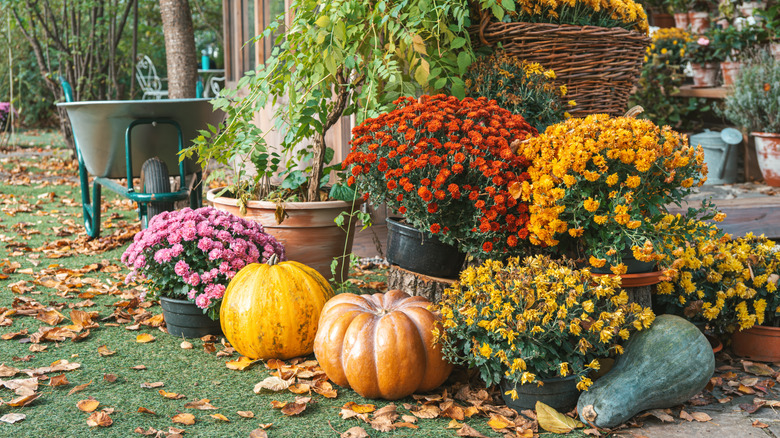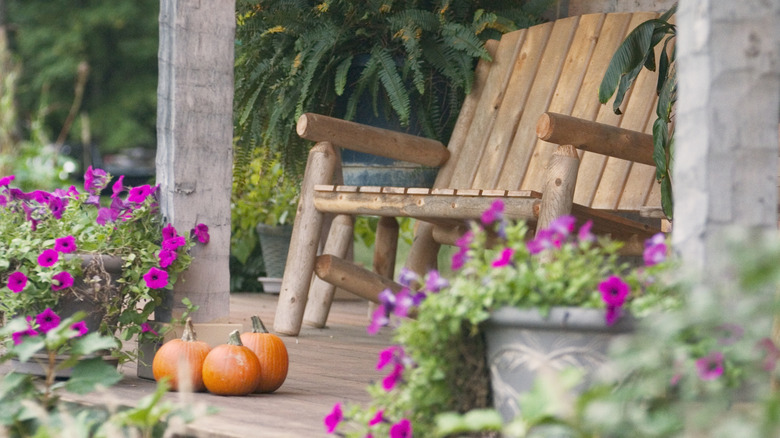The Fast-Growing Flower That Adds Color And Beauty To A Fall Garden
Mums aren't your only option for keeping your garden looking colorful through fall. Try one easy remedy: plant petunias. If you live in a warmer climate, like Florida, October or even November might even be the best time to add the colorful flowers to your garden. In most USDA Plant Hardiness Zones, petunias grow as annuals. In zones 9 to 11, they sometimes act like tender perennials, potentially blooming again in your garden as long as temperatures don't dip to freezing.
Petunias, a member of the nightshade family, Solanaceae, come in almost every color you can imagine, including pink, red, blue, gold, and green. They attract butterflies, just like violas, so they might be another annual flower in your fall garden that pollinators love. To plant these versatile flowers, grab already-flowering young petunias from your garden center. In the fall, even in warm climates, you probably won't have time to grow them from seed, which takes at least a couple of months.
Pick a spot to plant your petunias with full sun or partial shade, and then add them to containers or garden beds. Petunias survive in full shade, but they won't grow nearly as many flowers. However, one reason why petunias die instead of thrive is probably poorly drained soil. These flowers seem especially susceptible to root rot. In general, petunias don't need much water. You can get by with watering them just once a week unless it's particularly dry.
Keep up with watering, pests, and deadheading
When you do water petunias, aim for a deep soaking, rather than quick, shallow sprays with the hose. If you water too quickly, you can encourage petunias to grow shallow, weak roots, making the plants less drought tolerant. A deep watering where water runs out of the bottom of the pot encourages deeper roots.
Petunia varieties differ in size and color. While some petunia blooms might be fairly small, others can grow to be nearly half a foot wide. Many possess fun names, too, like "Flash Mob" or "Sugar Daddy". Pick the variety that calls to you. Just keep in mind you might have to be on the look-out for pests that affect the health of your flowers. Aphids love to munch on petunias, for example. You'll know you have an aphid problem if your plant's leaves begin to yellow or their flowers start to look puny. You might want to encourage more lady bugs as a remedy in your yard by planting yarrow, sweet alyssum, or marigolds – some of their favorites. Once in your garden, ladybugs can help keep aphid populations down.
When planting petunias, give them ample space, so make sure there's at least a foot between each plant. You might want to consider pruning your petunias, too, to keep them looking full and bushy. Pinching and deadheading might be one way to care for leggy petunias. Also, fall isn't the only time to think about planting these colorful flowers. You can also do so in the spring, after the last frost.

